Peugeot 3008 VS Volvo EX90 – Specs, Efficiency & Price Comparison
Find out now which car fits your needs better!
The Peugeot 3008 (SUV) is powered by a Plugin Hybrid, Electric or Petrol MHEV engine and comes with a Automatic transmission. In comparison, the Volvo EX90 (SUV) features a Electric engine and a Automatic gearbox.
When it comes to boot capacity, the Peugeot 3008 offers 520 L, while the Volvo EX90 provides 310 L – depending on what matters most to you. If you’re looking for more power, you’ll need to decide whether the 231 HP of the Peugeot 3008 or the 517 HP of the Volvo EX90 suits your needs better.
There are also differences in efficiency: 16.80 kWh0.90 L vs 19.90 kWh. In terms of price, the Peugeot 3008 starts at 34400 £, while the Volvo EX90 is available from 71700 £.
Compare all the key specs now and find out which model fits your lifestyle best!
Peugeot 3008
The Peugeot 3008 is a compact SUV that seamlessly combines sleek design with modern functionality. Its interior offers a sophisticated and comfortable driving experience, characterised by high-quality materials and innovative technology features. With its dynamic performance and stylish aesthetics, the 3008 stands out in the competitive world of family SUVs.
details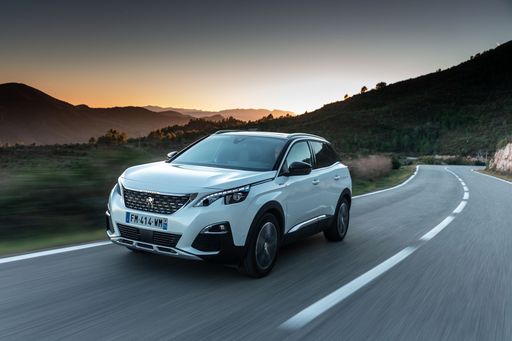 @ media.stellantis.com
@ media.stellantis.com
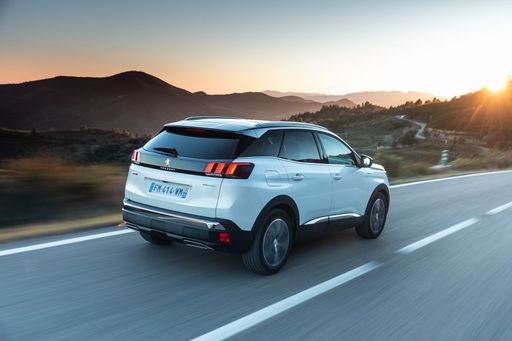 @ media.stellantis.com
@ media.stellantis.com
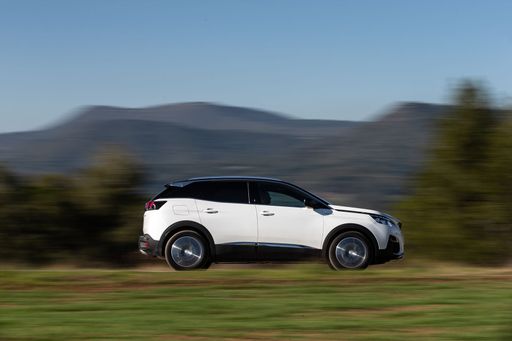 @ media.stellantis.com
@ media.stellantis.com
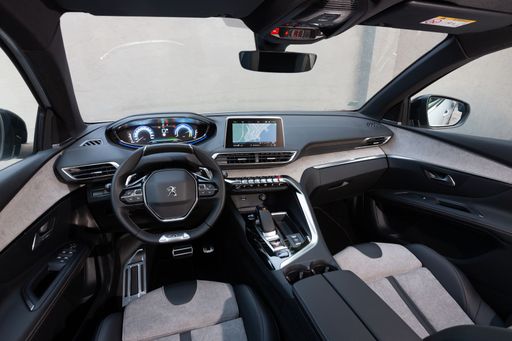 @ media.stellantis.com
@ media.stellantis.com
Volvo EX90
The Volvo EX90 represents a new era of luxury electric vehicles, combining sophisticated design with cutting-edge technology. Its interior offers a serene environment, enhanced by premium materials and a state-of-the-art infotainment system that ensures both comfort and connectivity. Safety remains paramount, with the EX90 featuring advanced driver assistance features to provide peace of mind on every journey.
details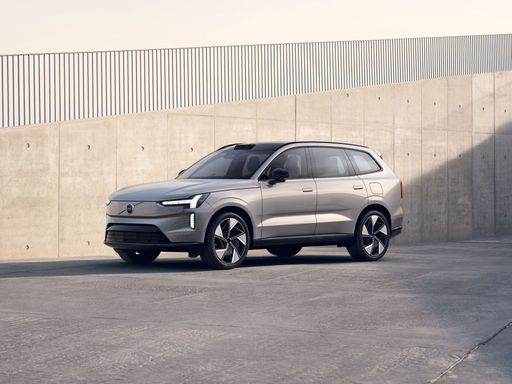 @ media.volvocars.com
@ media.volvocars.com
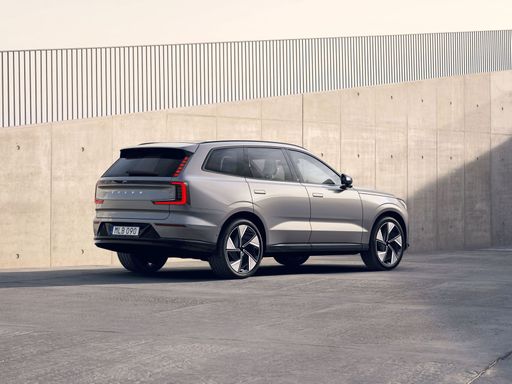 @ media.volvocars.com
@ media.volvocars.com
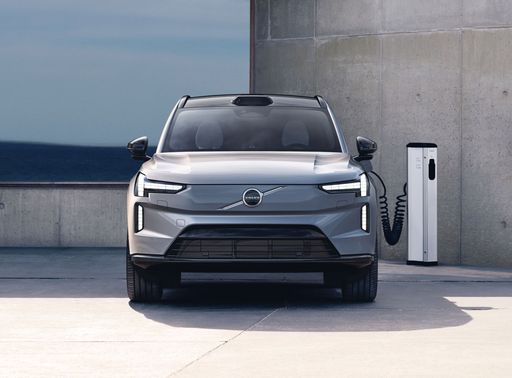 @ media.volvocars.com
@ media.volvocars.com
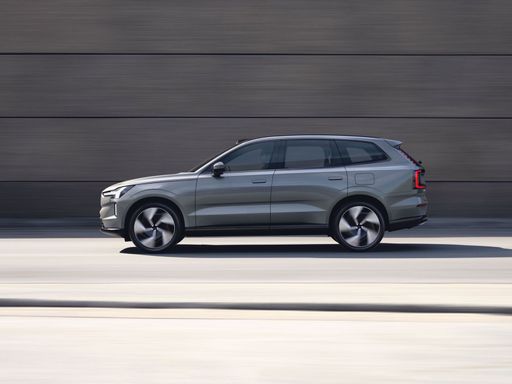 @ media.volvocars.com
@ media.volvocars.com
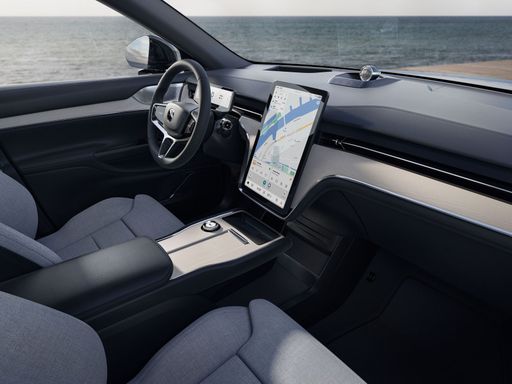 @ media.volvocars.com
@ media.volvocars.com
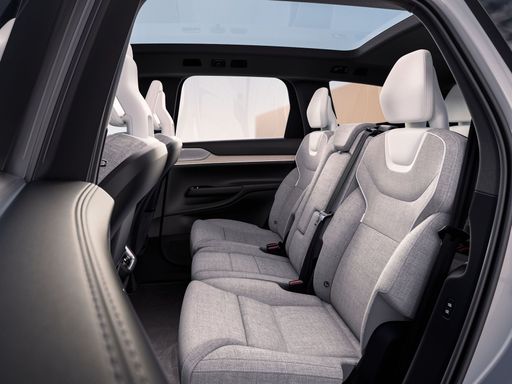 @ media.volvocars.com
@ media.volvocars.com

|

|
|
|
|
Costs and Consumption |
|
|---|---|
|
Price
34400 - 49000 £
|
Price
71700 - 92100 £
|
|
Consumption L/100km
0.9 - 5.5 L
|
Consumption L/100km
-
|
|
Consumption kWh/100km
16.8 - 17.2 kWh
|
Consumption kWh/100km
19.9 - 20.8 kWh
|
|
Electric Range
85 - 698 km
|
Electric Range
580 - 614 km
|
|
Battery Capacity
0.4 - 96.9 kWh
|
Battery Capacity
101 - 107 kWh
|
|
co2
0 - 123 g/km
|
co2
0 g/km
|
|
Fuel tank capacity
55 L
|
Fuel tank capacity
-
|
Dimensions and Body |
|
|---|---|
|
Body Type
SUV
|
Body Type
SUV
|
|
Seats
5
|
Seats
5 - 6
|
|
Doors
5
|
Doors
5
|
|
Curb weight
1648 - 2183 kg
|
Curb weight
2579 - 2787 kg
|
|
Trunk capacity
520 L
|
Trunk capacity
310 L
|
|
Length
4542 mm
|
Length
5037 mm
|
|
Width
1895 mm
|
Width
1964 mm
|
|
Height
1641 mm
|
Height
1744 mm
|
|
Payload
432 - 457 kg
|
Payload
421 - 611 kg
|
Engine and Performance |
|
|---|---|
|
Engine Type
Plugin Hybrid, Electric, Petrol MHEV
|
Engine Type
Electric
|
|
Transmission
Automatic
|
Transmission
Automatic
|
|
Transmission Detail
Automat. Schaltgetriebe (Doppelkupplung)
|
Transmission Detail
-
|
|
Drive Type
Front-Wheel Drive
|
Drive Type
Rear-Wheel Drive, All-Wheel Drive
|
|
Power HP
145 - 231 HP
|
Power HP
279 - 517 HP
|
|
Acceleration 0-100km/h
8.4 - 10.2 s
|
Acceleration 0-100km/h
4.9 - 8.4 s
|
|
Max Speed
170 - 220 km/h
|
Max Speed
180 km/h
|
|
Torque
230 - 345 Nm
|
Torque
490 - 910 Nm
|
|
Number of Cylinders
3 - 4
|
Number of Cylinders
-
|
|
Power kW
107 - 170 kW
|
Power kW
205 - 380 kW
|
|
Engine capacity
1199 - 1598 cm3
|
Engine capacity
-
|
General |
|
|---|---|
|
Model Year
2024 - 2025
|
Model Year
2024
|
|
CO2 Efficiency Class
B, A, D
|
CO2 Efficiency Class
A
|
|
Brand
Peugeot
|
Brand
Volvo
|
Peugeot 3008
Introduction to the Peugeot 3008
In the rapidly evolving world of SUVs, the Peugeot 3008 stands out as a prime example of innovative design and advanced technology. Offering a range of powertrains from hybrid to fully electric, the 3008 is tailored to meet the needs of eco-conscious drivers without sacrificing performance or luxury.
Powertrain Options and Performance
The Peugeot 3008 is designed to cater to a variety of driving preferences with its versatile range of powertrains. The options include petrol mild-hybrid, plug-in hybrid, and full electric variants. The power output ranges from a modest 136 PS to a robust 210 PS, providing a performance spectrum to suit both city commuters and long-distance travellers. Notably, the plug-in hybrid variant boasts an impressive electric range of up to 85 km, while the electric version can travel up to 524 km on a single charge, making it ideal for both urban and rural settings.
Driving Dynamics and Efficiency
The 3008's driving dynamics are refined and engaging, supported by its front-wheel-drive configuration and automatic transmission. Depending on the model, the vehicle can accelerate from 0 to 100 km/h in as little as 8.4 seconds, while maintaining an efficient fuel consumption rate of as low as 0.9 L/100km for the plug-in hybrid variant. For the eco-conscious drivers, the electric model offers a consumption rate of 17.7 kWh/100km, and its CO2 emissions range from 0 to 129 g/km, reflecting its commitment to reducing environmental impact.
Design and Comfort
The Peugeot 3008 boasts a modern and sophisticated design that embodies both elegance and functionality. Its expansive interior offers seating for five, complemented by a generous boot capacity of 520 litres. The vehicle's dimensions—4,542 mm in length, 1,895 mm in width, and 1,641 mm in height—ensure ample space and a commanding presence on the road. Additionally, the 3008's array of equipment lines like Allure and GT enhance the driving experience with premium features and luxurious touches.
Innovations and Technology
The Peugeot 3008 is equipped with a suite of cutting-edge technological features designed to enhance the driving experience. The intuitive infotainment system is central to the vehicle's interior, offering seamless connectivity and navigation options. Safety and driver assistance technologies are also prominent, including advanced systems for collision avoidance and parking assistance, ensuring peace of mind on every journey.
Conclusion
In summary, the Peugeot 3008 is a compelling choice for those seeking a versatile and modern SUV. With a range of efficient powertrains, dynamic performance, and luxurious design elements, it caters to a broad spectrum of drivers. Its advanced technological features and commitment to sustainability make the Peugeot 3008 a forward-thinking option in today's automotive landscape.
Volvo EX90
The New Volvo EX90: A Leap into the Future of Automobiles
The Volvo EX90 marks a significant step forward in automotive technology and design. As part of Volvo's commitment to sustainability and performance, this all-electric SUV combines cutting-edge technology with the brand’s renowned safety and reliability. Let's dive into the technical details and innovations that make the Volvo EX90 a standout in its class.
Performance and Range: Power Meets Efficiency
The Volvo EX90 offers a range of powertrains, catering to various performance preferences. With power outputs ranging from 279 to 517 PS, the EX90 ensures robust driving dynamics regardless of the selected variant. The vehicle's electric efficiency is underscored by consumption figures between 19.9 and 20.8 kWh/100 km, providing an impressive electric range of up to 614 km on a single charge.
The EX90's battery capacity, ranging from 101 to 107 kWh, is harmoniously paired with its drivetrain configurations, available in both rear-wheel and all-wheel drive models. These options allow a balance between efficiency and driving pleasure, with acceleration from 0-100 km/h in as little as 4.9 seconds.
Innovative Technologies for a Safer Drive
Volvo has always been synonymous with safety, and the EX90 is no exception. Equipped with advanced driver assistance systems, the vehicle includes features such as adaptive cruise control, lane keeping assistance, and a 360-degree camera system. These technologies work together to enhance comfort and security on the road.
Moreover, the EX90 utilises LiDAR technology, enabling it to detect and respond to the surrounding environment more accurately. This technology is pivotal in Volvo's ambition to make its cars safer and is a step toward fully autonomous driving.
Interior Elegance: Where Comfort Meets Functionality
The interior of the Volvo EX90 is a sanctuary of luxury and innovation. Available in four different trims, including the Core, Plus, and Ultra variations, it promises comfort and versatility, seating between five and seven passengers.
The cabin features a sleek design with a central touchscreen that integrates Volvo's latest infotainment system, ensuring connectivity and entertainment are at your fingertips. High-quality materials, meticulous craftsmanship, and thoughtful ergonomics create an inviting atmosphere for both driver and passengers.
Sustainability: A Commitment to Reducing Emissions
As part of Volvo’s sustainability mission, the EX90 underscores the brand's goal of reducing its carbon footprint. With zero tailpipe emissions, the EX90 stands as a testament to Volvo’s eco-conscious engineering. The car's CO2 efficiency justifies its A-grade in environmental standards.
Volvo's dedication to sustainable materials is evident in the EX90's interior, where recycled content is seamlessly integrated into its luxurious design, offering an eco-friendly yet sophisticated driving experience.
Conclusion: The Future is Electric
The Volvo EX90 is much more than just an electric vehicle; it's a glimpse into the future of sustainable mobility. By marrying performance with advanced safety features and a commitment to environmental responsibility, the EX90 sets a benchmark for what the modern SUV can be. For drivers looking to invest in a vehicle that's both future-ready and grounded in safety, the Volvo EX90 emerges as a compelling choice.
The prices and data displayed are estimates based on German list prices and may vary by country. This information is not legally binding.
